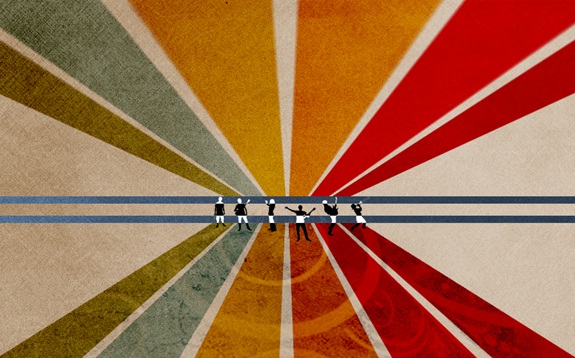A Comprehensive Guide: Crafting a Vibrant Retro Poster in Easy Steps

Introduction:
In the ever-evolving landscape of graphic design, the allure of retro aesthetics continues to captivate audiences with its nostalgic charm and vibrant color schemes. Crafting a colorful retro poster is an art form that seamlessly combines the spirit of yesteryear with contemporary design sensibilities. In this in-depth guide, we will explore the step-by-step process to create a visually striking and dynamic retro poster, demystifying the intricacies behind each stage.
Section 1: Embracing Retro Aesthetics
To embark on the journey of creating a colorful retro poster, it is crucial to understand the defining characteristics of this design style. Retro posters draw inspiration from various eras, including the psychedelic 1960s, the neon-soaked 1980s, and the bold patterns of the 1970s. Familiarize yourself with the iconic color palettes, typography, and visual motifs that define each era, serving as a foundation for your creative endeavor.
Section 2: Conceptualizing Your Poster
Before diving into the design process, articulate a clear concept for your poster. Consider the message or theme you want to convey and identify key elements that will resonate with your target audience. Whether it’s promoting an event, showcasing a product, or simply evoking a mood, a well-defined concept will guide your design decisions throughout the creative process.
Section 3: Choosing the Right Color Palette
The hallmark of a colorful retro poster lies in its vibrant and eye-catching color palette. Selecting the right combination of colors is paramount to capturing the essence of retro aesthetics. Experiment with bold and saturated hues, incorporating contrasting tones to create visual impact. Popular choices include electric blues, fiery oranges, and neon pinks, but don’t be afraid to explore unique combinations that align with your poster’s concept.
Section 4: Typography: Bold and Playful
Retro posters are synonymous with distinctive typography that reflects the spirit of the chosen era. Opt for bold and playful fonts that complement the overall theme. Experiment with variations in size, spacing, and orientation to add dynamism to your poster. Incorporate elements like drop shadows, outlines, or even warped text for an authentic retro feel.
Section 5: Illustrative Elements and Imagery
Enhance the visual appeal of your poster by incorporating illustrative elements and imagery that align with your concept. Retro posters often feature bold patterns, geometric shapes, and iconic symbols from the chosen era. Experiment with vector graphics or incorporate hand-drawn elements to infuse personality and uniqueness into your design.
Section 6: Layering and Texture
To add depth and character to your poster, leverage layering and texture techniques. Overlaying subtle textures, such as grunge or halftone patterns, can emulate the look of aged print materials, contributing to the overall retro aesthetic. Experiment with blending modes and opacity levels to achieve the desired visual effect.
Section 7: Finalizing and Refining
As you near the completion of your colorful retro poster, take the time to review and refine your design. Ensure that the composition is balanced, the color palette is cohesive, and the typography is legible. Fine-tune details such as shadows, highlights, and contrast to achieve a polished and professional finish.
Conclusion:
Crafting a colorful retro poster is a journey that merges creativity with a deep appreciation for design history. By embracing retro aesthetics, choosing vibrant color palettes, experimenting with bold typography, incorporating illustrative elements, and mastering layering techniques, you can create a visually striking poster that pays homage to the past while remaining relevant in the present. This comprehensive guide provides the tools and insights needed to embark on your own retro design adventure, allowing you to unleash your creativity and leave a lasting impression with a poster that is both timeless and contemporary.




